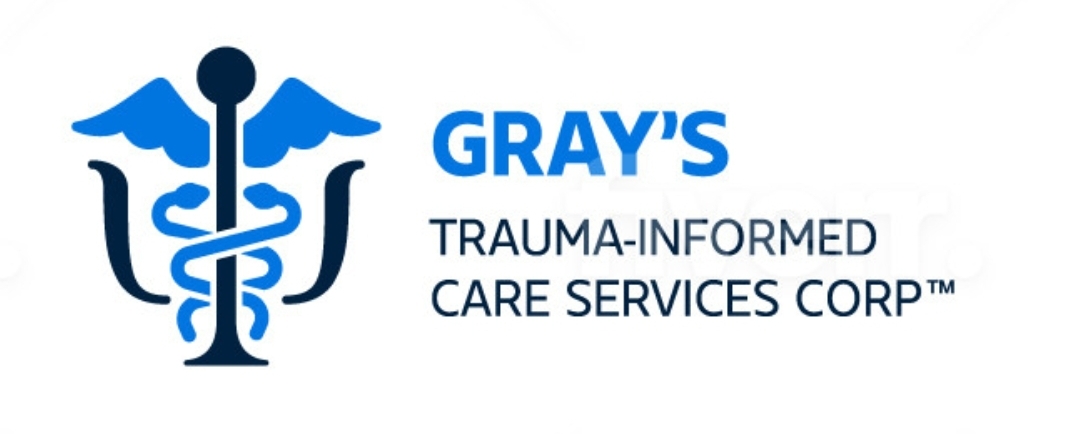The increased attention given to intimate partner violence has indicated that there are typically system-wide failures to detect and care for victims (Machado, Hines, & Douglas, 2020; Macy, Martin, Nwabuzor Ogbonnaya, & Rizo, 2018). Once in the system, victims may be exposed to multiple agencies. The victim initially may be visited by law enforcement. Some victims will require a neuropsychologist to conduct a cognitive assessment, a physician to treat and document physical injuries, interviews with a law enforcement officer, and even a safe place to stay to avoid further abuse (Macy et al., 2018).

Currently, multiple agencies may simultaneously be working on the same abuse case, with each agency working within its own silo unaware of the interventions, strategies, and case planning being attempted by other agencies. This approach is neither victim-centered nor responsive to the myriad of victims’ needs (U.S. Department of Justice, 2020; Vasquez & Houston-Kolnik, 2017). Furthermore, it does not respond appropriately to the needs of perpetrators, which is increasingly being recognized as an important aspect of a sustainable intervention strategy (Machado et al., 2020). Thus, there is growing recognition of the need for a multidisciplinary team (MDT) response to intimate partner violence (Richards, & Gover, 2018; U.S. Department of Justice, 2020).
Role of Domestic Violence Multidisciplinary Team
A domestic violence MDT is a group of professionals who represent various disciplines and work collaboratively from the point of the initial report of abuse to assure the most effective coordinated response possible for every victim (Barbara, Facchin, Vercellini, Cattaneo, & Kustermann, 2019; Richards, & Gover, 2018). Possible team members may include law enforcement, medical service providers, therapists, psychologists, district and city attorneys, victim-witness personnel, sexual assault and domestic violence counselors, social service agency members, nonprofit agency counseling professionals, or civil legal service providers (Barbara et al., 2019; Johnson, & Stylianou, 2020). A domestic violence MDT is victim-focused and designed to correct for the shortcomings in the system. In addition to system coordination, the agencies involved in the MDT ensure that victims do not fall through the cracks while addressing their range of needs (Johnson, & Stylianou, 2020; Richards, & Gover, 2018). Research also found that coordinated and collaborative responses to intimate partner violence result in better outcomes for victims and perpetrators, enhanced processes in and between agencies, improved service delivery and provision, and reduces violence (Johnson, & Stylianou, 2020).

Furthermore, domestic violence MDT allows each agency’s strengths to gleam, while sharing the burden of investigating and responding to complex abuse cases (Barbara et al., 2019; Johnson, & Stylianou, 2020). For instance, cooperation between law enforcement and victim advocates is useful to both parties in the course of DV investigations (Richards, & Gover, 2018). Victim advocates may serve as facilitators during these processes, using trauma-informed interviewing skills to obtain information that is relevant to the crime while minimizing victim stress and discomfort and protecting victims from secondary victimization. Court-based advocates can serve as important conduits between the victim and the prosecutor in accompanying victims throughout the often complex and ever-changing court process (Johnson, & Stylianou, 2020; Richards, & Gover, 2018). Furthermore, team members can provide support to one another, which may reduce the secondary trauma effects associated with these difficult cases (Barbara et al., 2019; Richards, & Gover, 2018). Studies indicated that collaboration and partnerships with allied professionals and community members who share concerns about victims’ rights and assistance contribute to the success of the discipline as a whole (Barbara et al., 2019).
Characteristics of High Performing Teams
A list of characteristics has been identified to improve the care of victims of violence through a more collaborative, coordinated response between the agencies likely to come into contact with them. The intention is to provide a wider range of support and assistance options, often from a central access point so that victims are linked with the resources they need without an array of separate services (Johnson, & Stylianou, 2020; Social Care Institute for Excellence, 2018; Wranik et al., 2019). These characteristics are presented below.

Share a common vision and goals. MDT, including criminal justice and service providers’ members, must be involved in developing a shared mission, purpose, goals, and objectives. MDT focuses on the safety of victims as its primary concern. Without buy-in from individual team members, the concept of a shared effort is lost, and disagreements on team processes are likely to be exacerbated (Social Care Institute for Excellence, 2018; Wranik et al., 2019).
Build relationships for trust and respect. Often, team members come from diverse backgrounds and bring many ideas and strategies to the common team table. Permission and encouragement must be given on participation, and team members’ involvement at every level must be validated as valuable and important, regardless of potential disagreements (Rosen et al., 2018; Social Care Institute for Excellence, 2018).
Balance task and process. The process of team building and management must be broken down into manageable tasks. While the ultimate goal is team consensus and collaborative outcomes, it is crucial to recognize that a number of tasks performed by a number of individuals with varying degrees of expertise, opinions, and resources are necessary for success (Wranik et al., 2019).
Emphasize and support team goals. While the consensus among team members for all team goals and expected outcomes is not essential for success, it is helpful. Individual team members should be provided with the opportunity to contribute to the initial development of overall goals, as well as make revisions, as needed, based upon team processes and incremental outcomes (Social Care Institute for Excellence, 2018).
Communicate effectively. Standards and guidelines for group communications should be established. While some team members may not want to be inundated with information that they consider to be irrelevant to their individual goals and tasks, others want to be kept in the loop on all team communications. Electronic communications via websites and email ease the process of overall team communications. However, it is critical to establish individual preferences for information sharing and team communications as a component of establishing team ground rules (Rosen et al., 2018; Wranik et al., 2019).

Future Directions
Research has advanced our understanding that care is interprofessional and involves the interdependent work of multiple care teams (e.g., law enforcement, medical service providers, therapists, psychologists, district and city attorneys, victim-witness personnel, sexual assault and domestic violence counselors, and social service agency members) to foster effective teamwork, enhance care coordination, and strive toward optimal outcomes for victims (Barbara et al., 2019; Johnson, & Stylianou, 2020). The integration of all the departments and professionals involved in the treatment of abuse guarantees full and continued support to victims during the care process and follow-up periods and it is perceived positively by most victims (Barbara et al., 2019). However, additional research is needed to further our understanding of team functioning and how to best implement and disseminate this evidence in victim care.
References
Barbara, G., Facchin, F., Vercellini, P., Cattaneo, C., & Kustermann, A. (2019). Sexual violence against women: a multidisciplinary integrated care model. BMJ, 367, l6616-l6616.
Johnson, L., & Stylianou, A. M. (2020). Coordinated Community Responses to Domestic Violence: A Systematic Review of the Literature. Trauma, Violence, & Abuse. https://doi.org/10.1177/1524838020957984
Machado, A., Hines, D., & Douglas, E. M. (2020). Male Victims of Female-Perpetrated Partner Violence: A Qualitative Analysis of Men’s Experiences, the Impact of Violence, and Perceptions of Their Worth. Psychology of men & masculinity, 21(4), 612–621. https://doi.org/10.1037/men0000285
Macy, R. J., Martin, S. L., Nwabuzor Ogbonnaya, I., & Rizo, C. F. (2018). What Do Domestic Violence and Sexual Assault Service Providers Need to Know About Survivors to Deliver Services? Violence Against Women, 24(1), 28–44. https://doi.org/10.1177/1077801216671222
Richards, T. N., & Gover, A. R. (2018). Domestic Violence Offender Treatment and Multidisciplinary Treatment Teams: The Role of “Treatment” Victim Advocates. International Journal of Offender Therapy and Comparative Criminology, 62(4), 851–867. https://doi.org/10.1177/0306624X16663890
Rosen, M. A., DiazGranados, D., Dietz, A. S., Benishek, L. E., Thompson, D., Pronovost, P. J., & Weaver, S. J. (2018). Teamwork in healthcare: Key discoveries enabling safer, high-quality care. The American psychologist, 73(4), 433–450. https://doi.org/10.1037/amp0000298
Social Care Institute for Excellence. (2018) Delivering integrated care: the role of the multidisciplinary team. https://www.scie.org.uk/integrated-care/workforce/role-multidisciplinary-team
U.S. Department of Justice. (2020). Introduction to Multidisciplinary Teams. https://www.justice.gov/elderjustice/1-introduction-multidisciplinary-teams
Vasquez, A. L., & Houston-Kolnik, J. (2017). Victim Need Report: Service Providers’ Perspectives on the Needs of Crime Victims and Service Gaps. Illinois Criminal Justice Information Authority. https://icjia.illinois.gov/researchhub/articles/victim-need-report-service-providers-perspectives-on-the-needs-of-crime-victims-and-service-gaps
Wranik, W. D., Price, S., Haydt, S. M., Edwards, J., Hatfield, K., Weir, J., & Doria, N. (2019). Implications of interprofessional primary care team characteristics for health services and patient health outcomes: A systematic review with narrative synthesis. Health policy (Amsterdam, Netherlands), 123(6), 550–563. https://doi.org/10.1016/j.healthpol.2019.03.015
